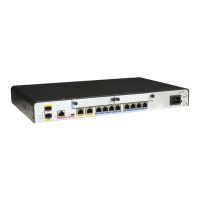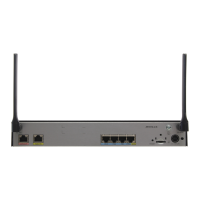The BGP-VPNv4 address family is displayed.
8. Run:
peer ipv4-address route-policy route-policy-name { export | import }
The routing policy is applied to controlling the VPN IPv4 routing information.
----End
3.7.5 (Optional) Storing Information About the VPN Instance on
the ASBR
If VPNv4 routes need to be sent and received on an ASBR, you can configure the relevant VPN
instance on the ASBR.
Context
If the VPN receives and sends the VPNv4 routing information through the ASBR, configure the
corresponding instance on the ASBR. Otherwise, the instance is not needed.
Perform the following steps on the ASBR.
Procedure
Step 1 Run:
system-view
The system view is displayed.
Step 2 Run:
ip vpn-instance vpn-instance-name
A VPN instance is created and the VPN instance view is displayed.
Step 3 Run:
ipv4-family
The IPv4 address family is enabled for the VPN instance and the VPN instance IPv4 address
family view is displayed.
Step 4 Run:
route-distinguisher route-distinguisher
The RD of the VPN instance IPv4 address family is configured.
Step 5 Run:
vpn-target vpn-target &<1-8> import-extcommunity
The VPN target extended community for the VPN instance IPv4 address family is created.
For the same VPN in the inter-AS VPN Option B mode, the VPN targets of the ASBR and PE
in an AS should match each other.
The VPN targets of the PE in different ASs must also match each other.
Step 6 (Optional) Run:
apply-label per-instance
Huawei AR1200 Series Enterprise Routers
Configuration Guide - VPN 3 BGP MPLS IP VPN Configuration
Issue 01 (2012-04-20) Huawei Proprietary and Confidential
Copyright © Huawei Technologies Co., Ltd.
101

